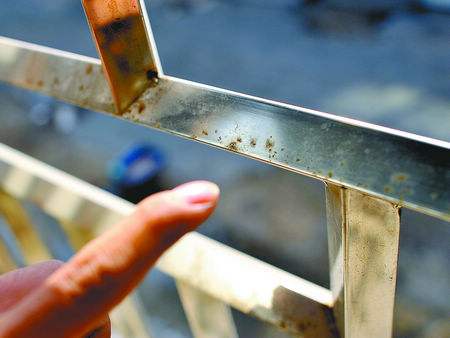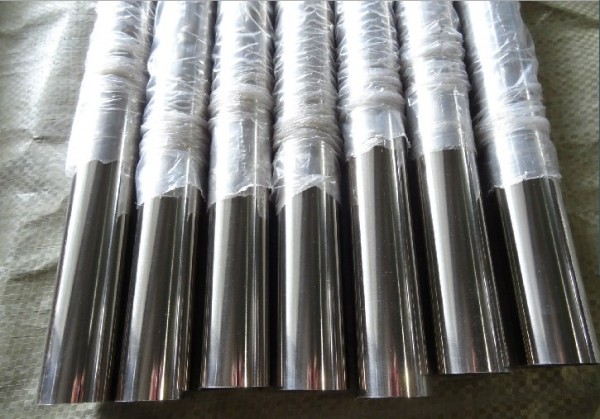Why does stainless steel rust? Why is there still magnetism?
When brown rust spots (spots) appeared on the surface of stainless steel pipes, people were surprised: "Stainless steel does not rust, and rust is not stainless steel. It may be that there is a problem with the steel." In fact, this is a one-sided misconception about the lack of understanding of stainless steel. Stainless steel can also rust under certain conditions.
Stainless steel has the ability to resist atmospheric oxidation-that is, non-rust, and it also has the ability to corrode in media containing acid, alkali, and salt-that is, corrosion resistance. However, the size of its corrosion resistance varies with the chemical composition of the steel itself, the state of protection, the conditions of use and the type of environmental media. Such as 304 steel pipe, in a dry and clean atmosphere, has absolutely excellent anti-corrosion ability, but when it is moved to coastal areas, it will quickly rust in sea fog containing a lot of salt; while 316 steel pipe has performance good. Therefore, it is not any kind of stainless steel, which can resist corrosion and rust in any environment.
Stainless steel relies on a very thin, strong, dense and stable chromium-rich oxide film (protective film) formed on its surface to prevent oxygen atoms from continuing to penetrate and continue to oxidize, thereby obtaining the ability to resist corrosion. Once for some reason, this film is continuously destroyed, oxygen atoms in the air or liquid will continue to infiltrate or iron atoms in the metal will continue to separate out, forming loose iron oxide, and the metal surface will continue to be rusted. There are many forms of damage to this surface film, and the following are more common in daily life:
1. The surface of stainless steel has accumulated dust containing other metal elements or attachments of foreign metal particles. In moist air, the condensed water between the attachments and stainless steel connects the two to form a micro battery, which initiates an electrochemical reaction. , The protective film is damaged, which is called electrochemical corrosion.
2. The surface of stainless steel adheres to the organic juice (such as melon, vegetable, noodle soup, sputum, etc.), which forms organic acid in the presence of water and oxygen, and the organic acid will corrode the metal surface for a long time.
3. The surface of stainless steel adheres to containing acid, alkali, and salt substances (such as alkaline water and lime water splashing on the decoration wall), causing local corrosion.
4. In polluted air (such as the atmosphere containing a large amount of sulfide, carbon oxide, and nitrogen oxide), it will form sulfuric acid, nitric acid, and acetic acid liquid spots when encountering condensed water, causing chemical corrosion.
To ensure that the metal surface is permanently bright and not corroded, we recommend:
(1)The surface of decorative stainless steel must be cleaned and scrubbed frequently to remove attachments and eliminate external factors that cause modification.
(2)316 stainless steel should be used in coastal areas, which can resist seawater corrosion.
(3) The chemical composition of some stainless steel pipes on the market cannot meet the corresponding national standards and cannot meet the 304 material requirements. Therefore, rust will also be caused, which requires users to carefully choose products from reputable manufacturers.
Note 1:
316 stainless steel (18Cr-12Ni-2.5Mo), due to the addition of Mo, its corrosion resistance, atmospheric corrosion resistance and high temperature strength are particularly good, can be used under harsh conditions; excellent work hardening (non-magnetic).
Used in sea water equipment, chemical, dye, paper, oxalic acid, fertilizer and other production equipment; photography, food industry, coastal facilities, ropes, CD rods, bolts, nuts
Note 2:
304 material (18Cr-8Ni), as a widely used steel, has good corrosion resistance, heat resistance, low temperature strength and mechanical properties; good hot workability such as stamping and bending, no heat treatment hardening phenomenon (non-magnetic, Then use temperature-196℃~800℃).
Used in household products (category 1, 2 tableware, cabinets, indoor pipelines, water heaters, boilers, bathtubs), auto parts (windshield wipers, mufflers, molded products), medical appliances, building materials, chemicals, food industry, agriculture, ship parts
Stainless steel is without magnetism, is it good stainless steel without magnetism? If the microstrip is magnetic, isn't it 304?
Many customers go to the market to buy stainless steel and bring a small magnet with them. Without magnetism, there will be no rust. In fact, this is a misunderstanding. The non-magnetic stainless steel strip is determined by the structure of the structure. During the solidification process, the molten steel will form "ferrite", "austenite", "martensite" and other stainless steels with different structures. Among them, " Both "ferritic" and "martensitic" stainless steels are magnetic (for example, SUS410 is a martensitic stainless steel). The "austenitic" stainless steel has good comprehensive mechanical properties, process performance and weldability, but only in terms of corrosion resistance, the magnetic "ferritic" stainless steel is stronger than the "austenitic" stainless steel. At present, the so-called 200 series and 300 series stainless steels with high manganese content and low nickel content in the market are not magnetic, but their performance is very different from that of 304 with high nickel content. On the contrary, 304 has been stretched, annealed, polished, cast, etc. The process treatment will also be micro-magnetic, so it is a misunderstanding and unscientific to judge the quality of stainless steel without magnetism.
More details Link: https://www.stargoodsteelgroup.com/
Reference source: Internet
Disclaimer: The information contained in this article is for reference only, not as a direct decision-making suggestion. If you do not intend to infringe your legal rights, please contact us in time.
Post time: Sep-01-2021








